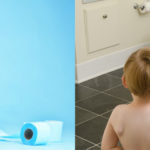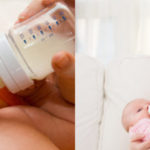Once the decision to breast feed is made, the next important thing is to select the type of formula you want to use. For most babies who are bottle fed, this process is usually initiated in the newborn nursery, and if the chosen formula is being well tolerated, there is really no need to switch to a different formula.
If there is a need to change to another type of formula, please call your pediatrician, or contact our office, to make an appointment to have your child evaluated. We will be very happy to discuss the options with you.
Choosing a Formula
Be sure to choose a DHA-enriched formula. Most, if not all of the US formula companies offer AA/DHA-enriched formulas.
There are some subtle differences among the major brands of infant formulas which may affect how your baby tolerates one formula over another. The vitamins and minerals in all formulas are similar, however, the nutritional fine points of the fats, carbohydrates, and proteins differ from one brand to another.
Standard formulas are those that are tolerated by most infants. Infants with special digestive needs require special formulas.
You may click here for some guidelines on how standard formulas differ and compare formula content. This may be of help in matching the formula to your baby’s needs.
Bottle Feeding Basics
Most mothers who make the decision to bottle feed their babies usually have a lot of questions about the process. There are several things to consider if you choose to bottle feed. These include formula preparation, sanitizing utensils, and feeding positions.
Here are seven simple steps that you can follow to successfully bottle feed your baby.
- Make sure all bottles, nipples, and other utensils are clean.
If the water in your home is chlorinated, clean the utensils in your dishwasher or wash them in hot tap water with dishwashing detergent and then rinse them in hot tap water. If you have well water or non-chlorinated water, either place the utensils in boiling water for five to 10 minutes or use a process called terminal heating.In terminal heating you clean, but do not sterilize, the bottles in advance. You then fill them with the prepared formula and cap them loosely. Next, the filled bottles are placed in a pan with water reaching about halfway up the bottles, and the water is brought to a gentle boil for about 25 minutes. - Read the directions.
Be sure to follow the manufacturer’s directions exactly for the formula type you choose. Too much water and your baby won’t get the calories and nutrients she needs; too little water and the high concentration of formula could cause diarrhea or dehydration. - Preparing the formula.
Bring the water you plan to use in the formula to a boil for approximately one minute. Then add it to the formula powder. If you’re preparing this in advance, be sure to store it in the refrigerator. If the formula is left out of the refrigerator for longer than one hour or if you don’t use refrigerated formula within 24 hours, throw it out. - Warm the refrigerated formula.
Refrigerated formula doesn’t necessarily have to be warmed up for your baby, but most infants prefer it at least at room temperature. The easiest way to warm refrigerated or frozen milk is to place the container in a pan of water on the stove at low heat and rotate it frequently. Microwave ovens should not be used for heating bottles; this can overheat the milk in the center of the container. Even if the bottle feels comfortably warm to your touch, the superheated milk in the center can scald your baby’s mouth. Also, the bottle itself can explode if left in the microwave too long.If you warm a bottle or use it immediately after terminal heating, test it in advance to make sure it’s not too hot for your baby. The easiest way to test the temperature is to shake a few drops on the inside of your wrist. - Place your baby in a proper feeding position.
Cradle her in a semi-upright position and support her head. Don’t feed her lying down — formula can flow into the middle ear, causing an infection. To prevent your baby from swallowing air as she sucks, tilt the bottle so that the formula fills the neck of the bottle and covers the nipple. - Take note of your baby’s intake.
The pediatrician will probably ask you how much your baby has eaten, so be prepared to answer the question. Your newborn will probably take between two and four ounces per feeding during his first few weeks (during the first few days, he may take less than an ounce at feedings), and will probably be hungry every two to four hours. It’s best to feed your baby on demand.Don’t force your baby to finish the bottle if he or she is not interested. And if your baby is still sucking enthusiastically when the bottle is empty, offer more. - Burp your baby.
Babies get fussy and cranky when they swallow air during feedings. This happens more often with bottle fed infants, though breast fed infants can also swallow air. To prevent a tummy full of air, burp your baby frequently — after every two or three ounces of formula. If your baby doesn’t burp after a couple of minutes of trying, resume feeding. Here are the three best positions:- Over the shoulder: Drape your baby over your shoulder and firmly pat or rub her back.
- On the lap: Sit your baby upright, lean her weight forward against the heel of your hand, and firmly pat or rub her back.
- Lying down: Place baby stomach-down on your lap and firmly rub or pat her back.
Types of Formula
- Ready To Feed – Premixed liquid. Do not add water. Be sure to shake well before feeding as it may have settled.
- Liquid Concentrated – Mix with equal amount of water. Be sure to shake well before mixing to blend ingredients.
- Powder – Mix 1 level unpacked scoop of powder, using the scoop that comes with the container, with 2 ounces of water. Be sure to shake all together.






